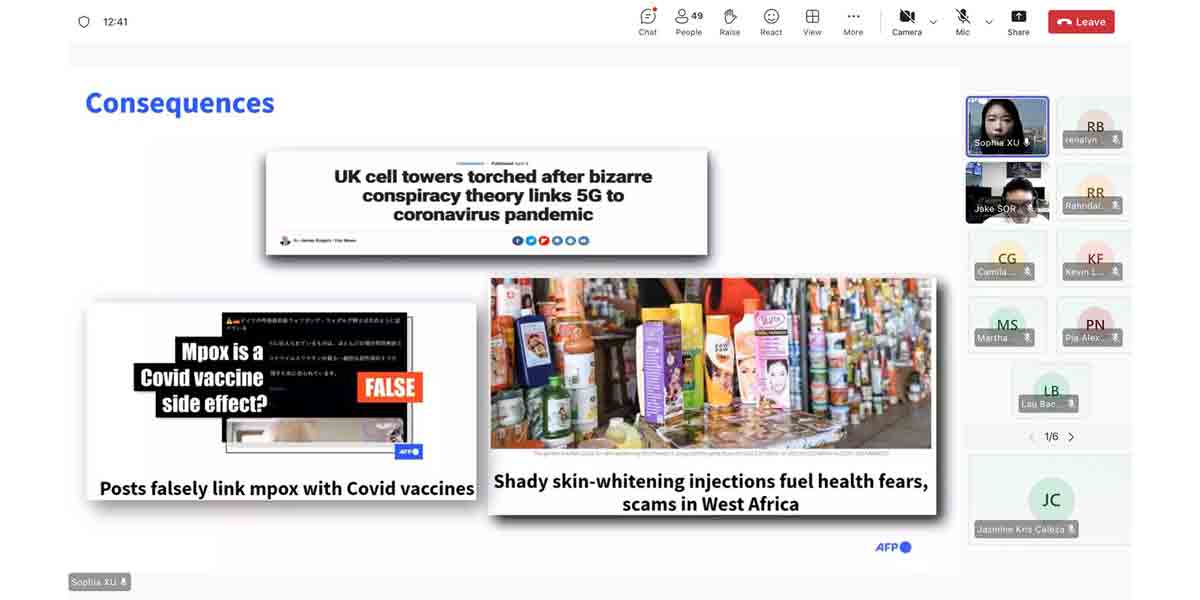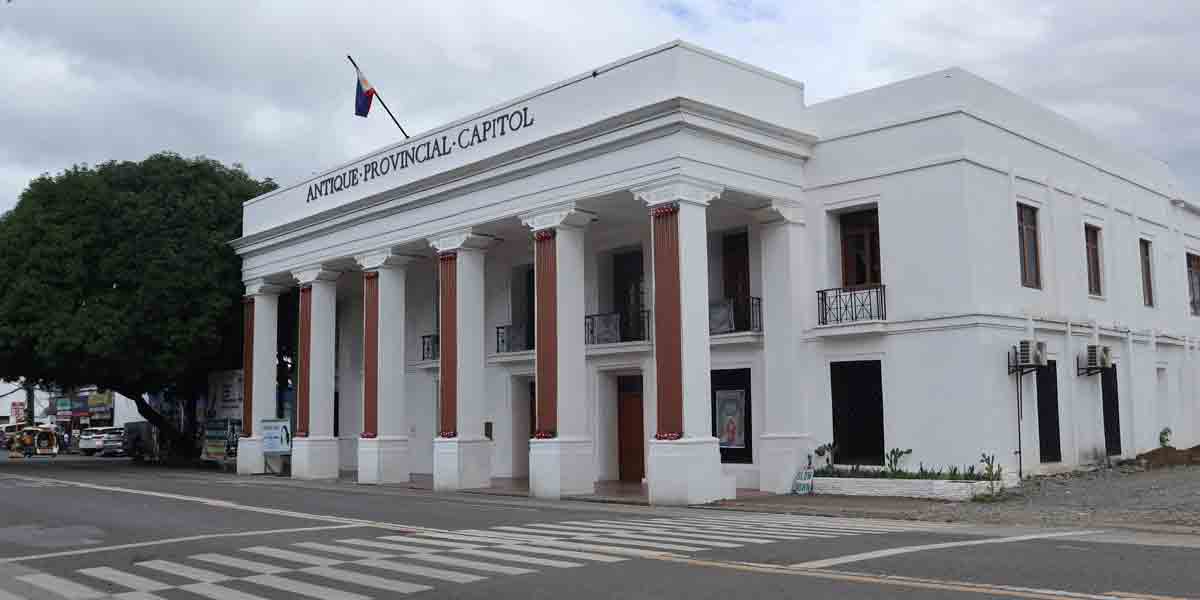By Francis Allan L. Angelo
The midday sun beat down on Iloilo City, casting long shadows across the bustling streets. But beneath the vibrant surface, a silent crisis simmers.
The city was grappling with the second-highest inflation rate in the Philippines, a harsh reality that was squeezing the life out of its residents, particularly those with the least, like Nestor and Nena.*
Nestor, his brow furrowed with worry, drives his aging tricycle through the congested traffic. Each surge of the engine was a reminder of the ever-increasing fuel prices that were eating away at his meager income.
“Before, PHP200 to PHP 300 could fill my fuel tank which will last two to three days,” he muttered to himself. “Now, it’s barely enough to get through a single day.”
He thought of Nena, his wife, who was probably already at the La Paz market, haggling with suppliers whose prices seemed to rise with each passing hour.
The cost of vegetables, fish, and even the humble tabagak had become almost unbearable.
“People buy less now,” Nestor recalled Nena telling him the night before, her voice heavy with despair. “They complain about the prices, and I can’t blame them. I can barely afford to feed our own family.”
THE BIG LEAP
Their story is not unique. Across Iloilo City, families were struggling to cope with the relentless rise in the cost of living as they faced one of the steepest price increases nationwide, with inflation jumping to 5.4 percent in December 2024 from 3.5 percent in November.
The jump led to the second-highest rate among 100 provinces and highly urbanized cities in the Philippines, the Philippine Statistics Authority (PSA) earlier reported.
Only Cagayan’s 5.7 percent inflation rate surpassed Iloilo City’s figure, which was nearly double the national average of 2.9 percent.
One of the factors cited by local think tank Institute of Contemporary Economics to have influenced inflationary price pressures is the impact of Real Property Tax particularly on housing rental rates, commercial rental rates and follow-on impact on prices of goods and services.
Nestor, who follows the local news daily, laments that the promise made by Mayor Jerry Treñas in 2019 not to increase business and real property taxes should have been kept instead of implementing a 300% RPT increase.
“He should have kept that promise. This store behind me would not have closed down like Jollibee at Gaisano Lapaz if their costumers continue to have that buying power,” he said in Hiligaynon.
Inflation refers to the rate at which the general level of prices for goods and services rises over a specific period. It reduces the purchasing power of money, meaning that consumers need to spend more to buy the same amount of goods or services.
Inflation can be caused by various factors, including rising production costs, increased demand for goods and services, and external economic pressures such as fluctuations in global markets.
The inflation rate for Iloilo City has been on an upward trend throughout 2024, culminating in its steep rise in December. This rate is substantially higher than the national average of 2.9 percent and the Western Visayas regional average of 3.4 percent.
CPI: A MEASURE OF INFLATION
The Consumer Price Index (CPI) measures the average change in the prices paid by consumers for a fixed basket of goods and services over time. This basket includes essential items such as food, housing, transportation, and utilities.
The CPI is expressed relative to a base year (in this case, 2018=100) to provide a clear comparison.
Suppose in 2018, a typical household in Iloilo City spent PHP 1,000 on a basket of goods and services (e.g., rice, electricity, transportation, etc.).
If the CPI for December 2024 is 129.0, this means the same basket now costs PHP 1,290—a 29% increase in prices since 2018.
In November 2024, when the CPI was 127.7, the basket would have cost PHP 1,277. The increase from PHP 1,277 in November to PHP 1,290 in December reflects the rise in prices within just one month.
ECONOMIC BOOM AND LOCALIZED INFLATION
When businesses flock to an area, they bring investment, jobs, and increased economic activity. This often leads to higher wages and more spending.
However, this sudden surge in demand can also outpace the supply of goods and services, driving up prices. This localized inflation is particularly acute in sectors like housing and essential goods.
Iloilo City, a growing economic hub in Western Visayas, is no stranger to these dynamics. The influx of businesses and the resulting economic boom have brought both opportunities and challenges.
While higher wages and economic activity are desirable, the increased demand for housing and basic commodities has pushed prices beyond the reach of many residents.
REAL PROPERTY TAX HIKE DRIVES INFLATION
A recent analysis by the Iloilo-based Institute of Contemporary Economics of data released by the Philippine Statistics Authority highlights how increased real property taxes (RPT) are exacerbating inflation in Iloilo City, thus impacting its competitiveness as an investment destination.
The analysis indicated that rising RPT rates are contributing to higher housing and commercial rental costs, which ripple across goods and services prices.
This, coupled with declining agricultural productivity and other supply-side pressures, sets Iloilo apart from peer highly urbanized cities (HUCs) such as Cebu and Cagayan de Oro.
The Consumer Price Index (CPI) in Iloilo City climbed to 129.0 in December 2024, further undermining its attractiveness compared to other HUCs and the National Capital Region (NCR).
To recall, the administration of Mayor Jerry Treñas increased the RPT in 2024 by updating the Fair Market Values (FMV) for lands and buildings, the first revision since 2006.
The FMV, which was approved by the City Council in June 2023, led to a 300% increase in RPT after 18 years, with the land levy rate increasing from 1.5% to 2%.
Meanwhile, the ad valorem tax on idle lands increased from 1% to 2% for residential properties and from 2% to 3% for agricultural, commercial, and industrial lands.
The new tax rates, which took effect in January 2024, was a break from Treñas’s statement in 2019 and 2021 that he will not increase taxes to maintain the city’s competitiveness and to help businesses recover after the pandemic.
In justifying the increase, Treñas also cited the lack of funds for basic services and key projects for the city.
But his statement is ironic as the City Hall actually has around approximately P5 billion in cash deposits with the Development Bank of the Philippines, as stated by the Local Finance Committee in a committee report that approved the 2025 budget.
Also, the city has borrowed more than PHP 2 billion to fund major projects like public market redevelopments, suggesting that it has enough cash to back up its debts.
No less than the report of the Committee on Appropriations on the 2025 budget stated that Iloilo City has enough resources to pay its debt, especially the PHP 5 billion deposit with DBP.
THE POOR SPEND MORE ON NECESSITIES
Low-income households spend a larger percentage of their income on necessities like food, energy, and housing. These are precisely the items most susceptible to price fluctuations during an economic boom. As these prices rise, the “personal inflation rate” for the poor becomes significantly higher than that of wealthier households who spend a smaller proportion of their income on these essentials.
For Nena and Nestor, their limited income meant that every peso spent was scrutinized. The rising cost of rice, vegetables, and fuel had left them with few choices. “We’re already buying the cheapest brands,” Nena often said.
LIMITED ABILITY TO ADJUST
Unlike wealthier individuals who can absorb price shocks or adjust their spending habits, the poor have limited options.
They are often already buying the cheapest available goods and services, leaving little room for substitution when prices rise. This further exacerbates the impact of inflation on their already strained budgets.
Nestor couldn’t simply trade his tricycle for a more fuel-efficient vehicle like those wealthier jeepney drivers could. He was trapped in a cycle of rising costs and dwindling income.
CASES AND REFERENCES
The Bureau of Labor Statistics (BLS) in the US has an experimental program called the R-CPI-I, which tracks inflation by income group. It consistently shows that low-income households experience higher inflation than high-income ones.
Similarly, a study by the Federal Reserve Bank of Atlanta found that inflation was higher in areas with greater income inequality. This suggests that the economic boom in certain areas can disproportionately benefit the wealthy while leaving the poor further behind.
Research by economists and institutions has highlighted how inflation can widen the gap between the rich and the poor. When the prices of essential goods rise, the poor are forced to cut back on other necessities, further diminishing their quality of life.
The case of gentrification in many urban areas exemplifies this phenomenon. As affluent residents move into previously low-income neighborhoods, property values and rents soar, displacing long-time residents who can no longer afford to live there.
INFLATION INEQUALITY
The inflation inequality, as economists call it, always hits the poor the hardest.
Just like other low-income earners, Nena and Nestor spend the majority of their income on necessities – food, rent, and fuel.
When the price of rice, their staple food, spiked, their personal inflation rate soared far beyond what wealthier families experienced.
The World Bank’s findings on the impact of global shocks on low-income countries resonate deeply.
The rising cost of fertilizer in Mindanao, for instance, would eventually ripple through the supply chain, driving up the price of produce in Iloilo City.
This “global impact, local pain” phenomenon meant that even events happening hundreds of miles away could further burden the already struggling Ilonggos.
But it wasn’t just about the numbers, as the Federal Reserve Bank of Dallas in the US had discovered through their surveys. The constant worry about rising costs was taking a toll on people’s mental health.
Nestor himself could see it in Nena’s tired eyes, in the way his neighbors snapped at each other, in the growing desperation on the faces of his passengers.
WHAT NOW, WHERE TO?
Inflation inequality is a critical issue that policymakers need to address.
While economic growth is desirable, it’s essential to ensure that its benefits are shared equitably. Policies aimed at mitigating the impact of inflation on the poor, such as targeted subsidies, affordable housing initiatives, and wage adjustments, are crucial for creating a more just and inclusive economy.
As Nestor dropped off his last passenger for the day, the setting sun casting a golden hue over the city, he couldn’t help but feel a sense of foreboding.
The vibrant colors of Iloilo City, especially in the Dinagyang season, seemed to mask a growing darkness, a struggle for survival in the face of relentless inflation.
He knew that he and his fellow Ilonggos were facing an uphill battle, one that would require resilience, resourcefulness, and perhaps a little bit of luck to overcome.
*Names withheld upon request
























The pandemic crisis is now over and most countries have their ( honest ) inflation rates back in their acceptable range but unfortunately here most of the inflation is driven by government corruption and incompetence and will stay that way for a long time to come.